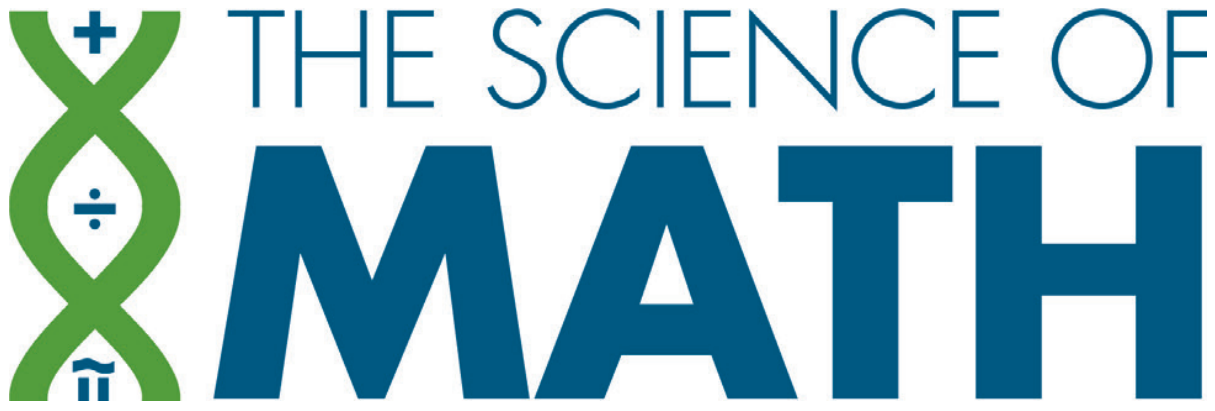
What is Explicit Instruction?
DEFINITION
Explicit instruction is unambiguous, structured, systematic, and scaffolded instruction.1 There are many descriptions of explicit instruction, all of which involve a combination of modeling and practice. We will rely on this model.2
WHY IS IT IMPORTANT?
Explicit instruction has an exceptionally strong research base for students who experience difficulty with math,3,4,5,6,7,8,9,10,11,12,13 but may also be beneficial for teaching math to all students.14,15,16,17,18
MODELING
Clear explanation
Planned examples of correct and incorrect responding on well-sequenced tasks
Practice
Guided practice to build accuracy and understanding
Independent practice to build fluency and understanding
SUPPORTS
Ask the right questions
Engage all students with frequent student responding
Provide feedback

Modeling starts with a step-by-step explanation of how to work a math problem. This is led by the teacher but should be considered a dialogue between the teacher and students. The explanation may include one or several planned examples.
Practice is where students start to internalize the math. Practice should include guided practice - this is where the teacher and students work on the same problems together so the teacher can give cues and hints to help the child correctly complete a step toward correct problem completion. Guided practice permits the teacher to help the child connect new learning to already mastered math understandings, to detect misconceptions, and re-teach a skill or skills when needed. Once children can accurately respond without requiring teacher assistance and can explain how they arrived at a correct response, independent practice is important to build fluency.
During modeling and practice, the teacher uses various supports to engage students, including:
-
Asking why, how and what, when questions to check for student understanding. Student understanding is improved through interleaved conceptual (why, how) and procedural (what, when) instruction delivered in the same instructional sessions.
-
Enabling frequent responses through dialogue and partner work. Responses can be oral, written, gestured (e.g. counting, pointing), and drawn (e.g. on a number line). A useful goal is every child responds every time.
-
Providing affirmative feedback for correct responses and corrective feedback for misconceptions.
To learn more about how to use explicit instruction in your classroom, check out these excellent resources provided by the National Center for Intensive Intervention https://intensiveintervention.org/training/course-content/explicit-instruction.19
The National Center for Intensive Interventions has rated math intervention tools using their Taxonomy of Intervention Intensity, which reflects in part the extent to which math intervention include explicit instruction. The resources located here https://intensiveintervention.org/implementation-intervention/taxonomy-intervention-intensity20 are useful to consider and evaluate ongoing classroom instruction and learn about how to improve the quality of instruction delivered in classrooms.
Explicit instruction is recommended as one of the six instructional practices essential to math instruction with strong research evidence.21 For a brief and very useful document that details how to put each of the recommended practices into action including systematic instruction, read here: https://ies.ed.gov/ncee/wwc/Docs/PracticeGuide/WWC-PraxGuide-Elementary-Math-Summary-508c.pdf.22
Explicit Instruction
Presenters: Jenny Root, Sarah Cox, and Corey Peltier
Explicit Instruction: Webinar Recording
Explicit Instruction: Interview
Citation: Advocates for the Science of Math (2021). What is explicit instruction? Authors.
(1) Hughes, C. A., Morris, J. R., Therrien, W. J., & Benson, S. K. (2017). Explicit instruction: Historical and contemporary contexts. Learning Disabilities Research & Practice, 32(3), 140-148.
(2) www.intensiveintervention.org
(3) Chodura, S., Kuhn, J. T., & Holling, H. (2015). Interventions for children with mathematical difficulties. Zeitschrift für Psychologie, 223(2),129-144.
(4) Cook, S. C., Collins, L. W., Morin, L. L., & Riccomini, P. J. (2020). Schema-based instruction for mathematical word problem solving: An evidence-based review for students with learning disabilities. Learning Disability Quarterly, 43(2), 75-87.
(5) Hwang, J., & Riccomini, P. J. (2016). Enhancing mathematical problem solving for secondary students with or at risk of learning disabilities: A literature review. Learning Disabilities Research & Practice, 31(3), 169-181.
(6) Hwang, J., Riccomini, P. J., Hwang, S. Y., & Morano, S. (2019). A systematic analysis of experimental studies targeting fractions for students with mathematics difficulties. Learning Disabilities Research & Practice, 34(1), 47-61.
(7) Jitendra, A. K., Lein, A. E., Im, S. H., Alghamdi, A. A., Hefte, S. B., & Mouanoutoua, J. (2018). Mathematical interventions for secondary students with learning disabilities and mathematics difficulties: A meta-analysis. Exceptional children, 84(2), 177-196.
(8) Kong, J. E., Yan, C., Serceki, A., & Swanson, H. L. (2021). Word-Problem-Solving Interventions for Elementary Students With Learning Disabilities: A Selective Meta-Analysis of the Literature. Learning Disability Quarterly,44(4),248-260.
(9) Kroesbergen, E. H., Van Luit, J. E., & Maas, C. J. (2004). Effectiveness of explicit and constructivist mathematics instruction for low-achieving students in the Netherlands. The Elementary School Journal, 104(3), 233-251.
(10) Nelson, G., & McMaster, K. L. (2019). The effects of early numeracy interventions for students in preschool and early elementary: A meta-analysis. Journal of Educational Psychology, 111(6), 1001.
(11) Peltier, C., & Vannest, K. J. (2017). A meta-analysis of schema instruction on the problem-solving performance of elementary school students. Review of Educational Research, 87(5), 899-920.
(12) Powell, S. R., Doabler, C. T., Akinola, O. A., Therrien, W. J., Maddox, S. A., & Hess, K. E. (2020). A synthesis of elementary mathematics interventions: Comparisons of students with mathematics difficulty with and without comorbid reading difficulty. Journal of Learning Disabilities, 53(4), 244-276.
(13) Stevens, E. A., Rodgers, M. A., & Powell, S. R. (2018). Mathematics interventions for upper elementary and secondary students: A meta-analysis of research. Remedial and Special Education, 39(6), 327-340.
(14) Alfieri, L., Brooks, P. J., Aldrich, N. J., & Tenenbaum, H. R. (2011). Does discovery-based instruction enhance learning? Journal of Educational Psychology, 103(1), 1.
(15) Geary, D. C., Hoard, M. K., Nugent, L., & Byrd-Craven, J. (2008). Development of number line representations in children with mathematical learning disability. Developmental Neuropsychology, 33(3), 277-299.
(16) Kilpatrick, J., Swafford, J., & Findell, B. (2001). Adding it up: Helping children learn mathematics (Vol. 2101), National Research Council (Eds.). Washington, DC: National Academy Press.
(17) Kirschner, P. A., Sweller, J., & Clark, R. E. (2006). Why minimal guidance during instruction does not work: An analysis of the failure of constructivist, discovery, problem-based, experiential, and inquiry-based teaching. Educational Psychologist, 41(2), 75-86.
(18) Morgan, P. L., Farkas, G., & Maczuga, S. (2015). Which instructional practices most help first-grade students with and without mathematics difficulties? Educational Evaluation and Policy Analysis, 37(2), 184-205.
(19) https://intensiveintervention.org/training/course-content/explicit-instruction
(20) https://intensiveintervention.org/implementation-intervention/taxonomy-intervention-intensity
(21) Fuchs, L.S., Newman-Gonchar, R., Schumacher, R., Dougherty, B., Bucka, N., Karp, K.S., Woodward, J., Clarke, B., Jordan, N. C., Gersten, R., Jayanthi, M., Keating, B., and Morgan, S. (2021). Assisting Students Struggling with Mathematics: Intervention in the Elementary Grades (WWC 2021006). Washington, DC: National Center for Education Evaluation and Regional Assistance (NCEE), Institute of Education Sciences, U.S. Department of Education. Retrieved from http://whatworks.ed.gov/.
(22) https://ies.ed.gov/ncee/wwc/Docs/PracticeGuide/WWC-PraxGuide-Elementary-Math-Summary-508c.pdf





